Sarah L. Johnson's Blog, page 114
September 3, 2013
Eric Brown's Murder By the Book, in which crime hits the literary scene of '50s London
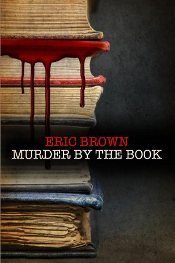 Donald Langham now writes about crimes rather than solving them. A prolific mystery novelist in 1955 London, he’s happy with his sedate life, preferring to live vicariously through the exploits of his fictional detective, private eye Sam Brooke. But when his longtime agent Charles Elder approaches him about a “delicate matter” – Charles is being blackmailed with scandalous photos of himself and a male lover – Langham springs into action.
Donald Langham now writes about crimes rather than solving them. A prolific mystery novelist in 1955 London, he’s happy with his sedate life, preferring to live vicariously through the exploits of his fictional detective, private eye Sam Brooke. But when his longtime agent Charles Elder approaches him about a “delicate matter” – Charles is being blackmailed with scandalous photos of himself and a male lover – Langham springs into action.With the help of contacts from his former PI days and Charles’ attractive assistant, the razor-sharp Maria Dupré, Langham tries to find the culprit before the incriminating pictures become public. However, it soon becomes apparent this is no ordinary case of extortion.
This is a fun old-fashioned mystery set amid London’s bustling literary community. There are occasional references to the war, and the neighborhoods and environs of the city are vividly described, but otherwise the historical backdrop isn’t prominent. As the tension ratchets ever higher, Langham and Maria begin falling in love, and their sweet, un-angsty romance is a pleasure to follow. A good-hearted, portly man who appreciates the finer things in life, Charles is quite an entertaining character, although some phrases he uses are overdone. He calls Langham "my dear boy" over thirty times in all!
The best part involves just sitting back and watching all the literary types – agents, editors, successful authors, disgruntled hacks, and a grande dame novelist in the Agatha Christie mold – interact within the sometimes congenial, sometimes cutthroat publishing scene. Langham is also a freelance critic of some note, and after an old friend offers to meet him for a pint, Langham tells him, “You’ve saved me from a dull evening of reading for review.” This reviewer, fortunately, had no such worries with this book.
Murder By the Book, first volume of the Langham and Dupré mysteries, was published in July 2013 by Crème de la Crime, a mystery imprint of Severn House ($28.95/£19.99, hb, 224pp). This may be the first historical I've read with a book reviewer as protagonist! This review first appeared in the Historical Novels Review's August issue.
Published on September 03, 2013 06:00
August 29, 2013
A Canadian historical fiction showcase, part 4
Over the last few years, I've been posting galleries of new and forthcoming novels from Canadian authors and presses. This is the fourth entry in this series; for earlier Canadian releases (2010-12), see the first, second, and third installments. Based on past experience, approximately half of these novels will also be published in the US simultaneously or at a later time. Of course, I frequently buy them from Amazon.ca before I know about their US publication, which means I spend way too much on postage!
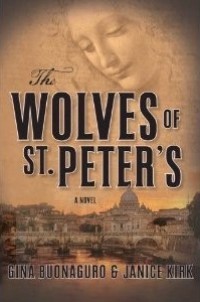
In this historical mystery set in Renaissance Rome, one of Michelangelo's houseboys sees the body of a golden-haired prostitute pulled from the Tiber and gets drawn into a quest to discover who killed her. The authors' previous historical novels include The Sidewalk Artist and Ciao Bella (both of which are available in the US). HarperCollins Canada, April 2013. [see on Goodreads]
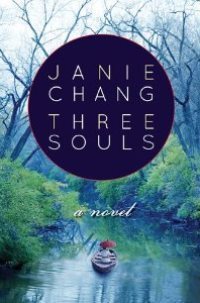
Song Leiyin, who has become a ghost following her untimely death, looks back on her life in 1920s China, during the country's civil war, when she defied her father in order to capture the heart of a left-wing poet... and paid the price. With its glimpses of the Chinese afterlife and depictions of quirky family antics, I expect it will reach the same eager audience as Yangsze Choo's new and popular The Ghost Bride. HarperCollins Canada, August 2013; also William Morrow in the US, February 2014. [see on Goodreads: Canadian edition, US edition]
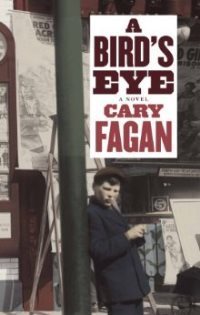
A Jewish young man comes of age in Depression-era Toronto, learning about the magician's art and the mysteries of love. The publisher calls it "a small-scale The Amazing Adventures of Kavalier and Clay," and reviewers speak of its detailed evocation of 1930s Toronto life. House of Anansi, August 2013. [see on Goodreads]
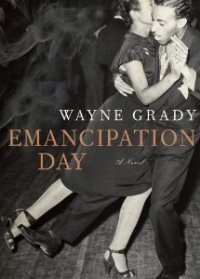
A literary novel about love, big-band jazz, deception, family heritage, and the politics of race, beginning in WWII Newfoundland and moving to 1950s Toronto. There's been lots of positive buzz about this one in the Canadian press. Doubleday Canada, July 2013. [see on Goodreads]
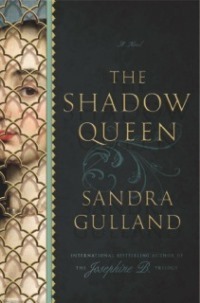
Sandra Gulland's long-awaited fifth novel takes place at the glittering court at Versailles in the mid-17th century and focuses on a lesser-known historical figure, Claude des Oeillets (here called Claudette), who falls into the orbit of Louis XIV's mistress, Athenais de Montespan, during the infamous Affair of the Poisons. HarperCollins Canada, March 2014; also Doubleday US, March. [see on Goodreads: Canadian edition not listed yet, US edition]
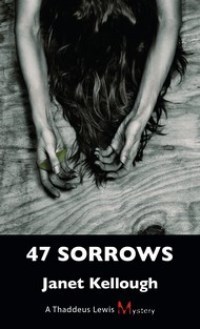
A somber mystery with Irish roots, set along Lake Ontario in 1847, the time of the potato famine in Ireland. It centers on the death of a man whose body conceals a green ribbon, coincidentally (or probably not) the same artifact found on the body of a patient who died of ship's fever at a Kingston hospital. Dundurn, July 2013. [see on Goodreads]
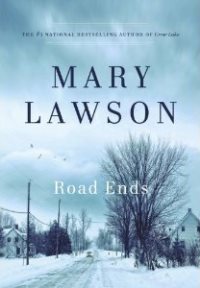
A literary novel about early 20th-century family life in a fictional northern Ontario town. Lawson has previously written the internationally acclaimed Crow Lake and The Other Side of the Bridge, which made it to the Booker longlist. Knopf Canada, November 2013. [see on Goodreads]
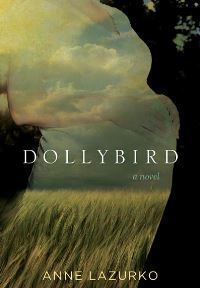
In the early 20th century, Moira Burns, a native of Newfoundland, is banished to the stark prairies of southern Saskatchewan, where she becomes the housekeeper – and maybe also the mistress – of an Irish Catholic homesteader. For those not familiar with the title's meaning, the publisher has: "Housekeeper or whore? A dollybird is either or both in the vocabulary of the prairie west in 1906." What a beautiful, evocative cover. Coteau, July 2013. [see on Goodreads]
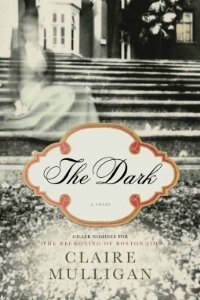
A subtly atmospheric historical novel and ghost story set in New York in 1893, surrounding the alleged talents of the Fox sisters, the originators of the 19th-century Spiritualist movement. Maggie Fox, the only one of the trio still in the world of the living, reveals their secrets to her physician, Mrs. Mellon, but is she telling the truth? My copy arrived two weeks ago, along with Muse, below. Doubleday Canada, May 2013. [see on Goodreads]
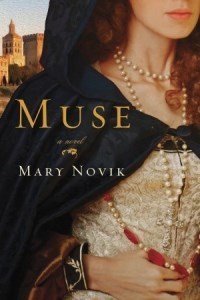
Mary Novik set a high standard with Conceit, her stunning novel about John and Ann Donne and their daughter Pegge in 17th-century London (my review here), so I've been eagerly awaiting her second book. Muse travels further back in time to 14th-century Avignon, then the home of the papacy, to imagine the life of the woman who may have inspired Petrarch's poems. Doubleday Canada, August 2013. [see on Goodreads]
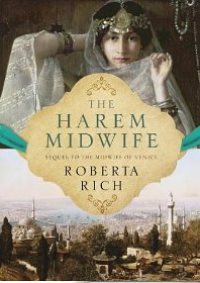
Roberta Rich's The Midwife of Venice is a diverting romp that sheds light on the plight of Jewish women in Renaissance Venice (my review here). This sequel will follow Hannah Levi, the midwife of the title, and her husband Isaac as they run up against more suspenseful adventures in 16th-century Constantinople. Hannah faces another moral dilemma when an unwilling would-be concubine of the sultan asks for her help. Doubleday Canada, October 2013; also Gallery in the US, February 2014. [see on Goodreads: Canadian edition, US edition]
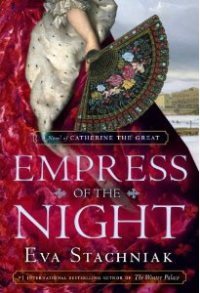
The Winter Palace told the story of Catherine the Great's rise to absolute power through the eyes of Varvara, her servant and spy (I thought it was brilliant; my review from Booklist here). Empress of the Night is the followup, but not quite a sequel, as it reveals the continuation of Catherine's story – her loves, accomplishments, and power plays – from her own viewpoint. Doubleday Canada, March 2014; also Bantam, April 2014. [see on Goodreads: Canadian edition, US edition]
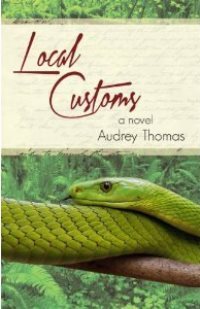
Last in this list alphabetically but definitely not least in my view, Local Customs is grounded in the real-life mystery of a London couple who traveled to West Africa in 1838; eight weeks later, the wife, Letitia Maclean, was dead of a medication overdose, although her physician denied having prescribed it for her. The cover is unique, and I like it a lot. Dundurn, February 2014. [see on Goodreads]

In this historical mystery set in Renaissance Rome, one of Michelangelo's houseboys sees the body of a golden-haired prostitute pulled from the Tiber and gets drawn into a quest to discover who killed her. The authors' previous historical novels include The Sidewalk Artist and Ciao Bella (both of which are available in the US). HarperCollins Canada, April 2013. [see on Goodreads]

Song Leiyin, who has become a ghost following her untimely death, looks back on her life in 1920s China, during the country's civil war, when she defied her father in order to capture the heart of a left-wing poet... and paid the price. With its glimpses of the Chinese afterlife and depictions of quirky family antics, I expect it will reach the same eager audience as Yangsze Choo's new and popular The Ghost Bride. HarperCollins Canada, August 2013; also William Morrow in the US, February 2014. [see on Goodreads: Canadian edition, US edition]

A Jewish young man comes of age in Depression-era Toronto, learning about the magician's art and the mysteries of love. The publisher calls it "a small-scale The Amazing Adventures of Kavalier and Clay," and reviewers speak of its detailed evocation of 1930s Toronto life. House of Anansi, August 2013. [see on Goodreads]

A literary novel about love, big-band jazz, deception, family heritage, and the politics of race, beginning in WWII Newfoundland and moving to 1950s Toronto. There's been lots of positive buzz about this one in the Canadian press. Doubleday Canada, July 2013. [see on Goodreads]

Sandra Gulland's long-awaited fifth novel takes place at the glittering court at Versailles in the mid-17th century and focuses on a lesser-known historical figure, Claude des Oeillets (here called Claudette), who falls into the orbit of Louis XIV's mistress, Athenais de Montespan, during the infamous Affair of the Poisons. HarperCollins Canada, March 2014; also Doubleday US, March. [see on Goodreads: Canadian edition not listed yet, US edition]

A somber mystery with Irish roots, set along Lake Ontario in 1847, the time of the potato famine in Ireland. It centers on the death of a man whose body conceals a green ribbon, coincidentally (or probably not) the same artifact found on the body of a patient who died of ship's fever at a Kingston hospital. Dundurn, July 2013. [see on Goodreads]

A literary novel about early 20th-century family life in a fictional northern Ontario town. Lawson has previously written the internationally acclaimed Crow Lake and The Other Side of the Bridge, which made it to the Booker longlist. Knopf Canada, November 2013. [see on Goodreads]

In the early 20th century, Moira Burns, a native of Newfoundland, is banished to the stark prairies of southern Saskatchewan, where she becomes the housekeeper – and maybe also the mistress – of an Irish Catholic homesteader. For those not familiar with the title's meaning, the publisher has: "Housekeeper or whore? A dollybird is either or both in the vocabulary of the prairie west in 1906." What a beautiful, evocative cover. Coteau, July 2013. [see on Goodreads]

A subtly atmospheric historical novel and ghost story set in New York in 1893, surrounding the alleged talents of the Fox sisters, the originators of the 19th-century Spiritualist movement. Maggie Fox, the only one of the trio still in the world of the living, reveals their secrets to her physician, Mrs. Mellon, but is she telling the truth? My copy arrived two weeks ago, along with Muse, below. Doubleday Canada, May 2013. [see on Goodreads]

Mary Novik set a high standard with Conceit, her stunning novel about John and Ann Donne and their daughter Pegge in 17th-century London (my review here), so I've been eagerly awaiting her second book. Muse travels further back in time to 14th-century Avignon, then the home of the papacy, to imagine the life of the woman who may have inspired Petrarch's poems. Doubleday Canada, August 2013. [see on Goodreads]

Roberta Rich's The Midwife of Venice is a diverting romp that sheds light on the plight of Jewish women in Renaissance Venice (my review here). This sequel will follow Hannah Levi, the midwife of the title, and her husband Isaac as they run up against more suspenseful adventures in 16th-century Constantinople. Hannah faces another moral dilemma when an unwilling would-be concubine of the sultan asks for her help. Doubleday Canada, October 2013; also Gallery in the US, February 2014. [see on Goodreads: Canadian edition, US edition]

The Winter Palace told the story of Catherine the Great's rise to absolute power through the eyes of Varvara, her servant and spy (I thought it was brilliant; my review from Booklist here). Empress of the Night is the followup, but not quite a sequel, as it reveals the continuation of Catherine's story – her loves, accomplishments, and power plays – from her own viewpoint. Doubleday Canada, March 2014; also Bantam, April 2014. [see on Goodreads: Canadian edition, US edition]

Last in this list alphabetically but definitely not least in my view, Local Customs is grounded in the real-life mystery of a London couple who traveled to West Africa in 1838; eight weeks later, the wife, Letitia Maclean, was dead of a medication overdose, although her physician denied having prescribed it for her. The cover is unique, and I like it a lot. Dundurn, February 2014. [see on Goodreads]
Published on August 29, 2013 11:30
August 26, 2013
Caitlin Davies' Family Likeness, an affecting tale about the search for belonging in postwar and modern Britain
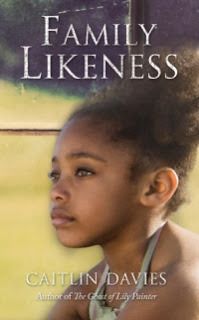 Caitlin Davies' Family Likeness begins like a film that's been deliberately shot out of focus. Its two stories have no obvious connection at first, and it's only later, as the plots and characterizations develop, that the big picture sharpens.
Caitlin Davies' Family Likeness begins like a film that's been deliberately shot out of focus. Its two stories have no obvious connection at first, and it's only later, as the plots and characterizations develop, that the big picture sharpens.In an upscale north London neighborhood in the present, Rosie Grey happens upon a new position not long after leaving her previous teaching job. After preventing a young girl's collision with a cyclist, the girl's father, a visiting black American named Jonas Murrey, asks Rosie to become the live-in nanny for his daughter and her younger brother while he's on a business trip overseas.
As Rosie adjusts to this odd situation – raising two unfamiliar children during their father's six-week absence – she establishes a daily routine, taking them to nursery and school and on outings, and puzzles over Jonas' failure to answer an email about Ella's schooling.
Intertwined with Rosie's diary entries is the affecting story of a mixed-race girl growing up in a children's home in 1950s Kent. Muriel Wilson, whose dark complexion ensures she'll always remain an outsider, wonders why her mam, a beautiful white woman, left her there and never visits. Decades later, reunited with her original admissions papers, Muriel remembers how alone she felt, having had essentially to raise herself, confused about the matron's coldness toward her in that cheerless place and accepting that foster parents for her would never be found.
"Here I am at the age of sixty-five," she says, "still searching for my childhood... some days it is as if I am crouching by a pond, my hands plunged in the water, looking for a fish that I know is there. And I can't find it; it is as slippery and elusive as a memory." Muriel's sad coming-of-age story is the novel's most effective aspect, evoking the distressing plight of "half-caste" children (an authentic but dreadful label) growing up in the postwar years.
Rosie's personality is difficult to read until she gets to know and care for her charges. Bobby is an adorable toddler, while Ella is a clever yet troubled nine-year-old who needs more attention than her father gives her. Davies also pulls the story along through Rosie's occasional hints that her job as the children's nanny was something she'd planned from the start.
On an excursion to a stately home on the city's outskirts, Rosie and the children see a portrait on the wall of a young 18th-century woman, Dido Elizabeth Belle, who Ella thinks resembles Rosie. Dido is a historical figure: the illegitimate daughter of Admiral Sir John Lindsay and a woman of African Caribbean origin, she was brought up alongside her cousin, Lady Elizabeth Murray, at London's Kenwood House. Although often described as "Britain's first black aristocrat," Dido's status in the Murray household wasn't that assured.
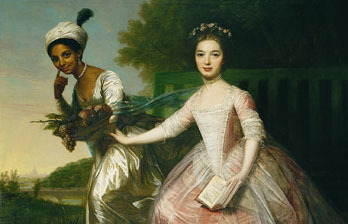 Dido Elizabeth Belle and her cousin, Elizabeth Murray, artist unknown
Dido Elizabeth Belle and her cousin, Elizabeth Murray, artist unknownDido doesn't play as major a role in the novel as the jacket blurb indicates, which is a bit disappointing; instead, her presence serves to emphasize the uncertain positions occupied by those of black heritage in historical Britain. However, it suffices to pique interest in her life. (An upcoming film, Belle, promises to offer a more complete picture.)
Saying exactly why would mean venturing into spoilerville, but one aspect of the resolution to the mystery of Muriel's parents and how it ties to Rosie's experiences feels too tidy. But despite that and the distancing effect of the early sections, Family Likeness remains a thoughtful and involving look at the social consequences of race and illegitimacy and how one's need for a place to belong never really goes away.
Family Likeness was published by Hutchinson in July at £14.99 (hb, 311pp); find it on Goodreads here. Davies is an English writer, the daughter of authors Margaret Forster and Hunter Davies. This was a personal purchase.
Published on August 26, 2013 11:00
August 23, 2013
The Purchase by Linda Spalding, an exploration of the morality of slavery in early America
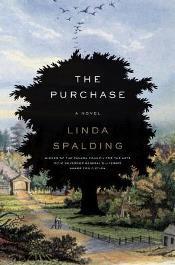 In 1798, Daniel Dickinson brings his five children and new bride out of Pennsylvania and into southwestern Virginia. A recent widower, Daniel has been cast out of the Quakers for marrying his family’s Methodist servant, Ruth, a 15-year-old orphan.
In 1798, Daniel Dickinson brings his five children and new bride out of Pennsylvania and into southwestern Virginia. A recent widower, Daniel has been cast out of the Quakers for marrying his family’s Methodist servant, Ruth, a 15-year-old orphan.The work is unrelenting and arduous; they have no experience building a homestead or farming. When Daniel unintentionally purchases a slave boy, Onesimus, his abolitionist beliefs slowly evaporate in the face of economic necessity and the need to protect him, or so he rationalizes.
With mesmerizing prose echoing the bleak environment, Spalding demonstrates how one snip of a people’s moral fabric can cause their values to unravel. The many biblical allusions enhance the telling. “The institution is as old as time,” Daniel sorrowfully informs his daughter, Mary, when she questions him about slavery. Observing his example and its tragic aftereffects, Mary and her siblings grow up to form their own sense of right and wrong.
A harrowing and moving saga with stunning evocations of day-to-day life, herbal medicine, and the meaning of freedom in early America.
This review first appeared in Booklist's July 2013 issue. The Purchase was published by Pantheon in August ($25.95, hb, 320pp). The Canadian publisher is McClelland & Stewart (Can $29.99, hb, 368pp).
Some added comments:
- The Purchase won Canada's Governor-General's Literary Award for Fiction in 2012. The author was born in Kansas and has lived in Canada since 1982. She's married to fellow Canadian novelist Michael Ondaatje.
- The novel is based on people and situations from Spalding's family history (her maiden name is Dickinson).
- I'd recommend The Purchase to literary fiction readers who enjoy character-centered novels and can appreciate the authentically bleak atmosphere and tone. The Goodreads reviews and ratings are all over the place. It's beautifully written – I quite enjoyed it – but it's not for everyone.
Published on August 23, 2013 06:00
August 21, 2013
An interview with Jessica Dotta, author of the Victorian Gothic novel Born of Persuasion
Jessica Dotta's debut opens as an older woman looks back on a traumatic episode from her early life, a time of poverty, betrayal, deception, and scandal. In the later months of 1838 in England, gently bred Julia Elliston finds herself alone and penniless. Her father is long gone, her mother is dead by her own hand, and, since she's only seventeen, her choices are dictated by a mysterious guardian who may not have her best interests at heart.
Born of Persuasion, first in the Price of Privilege trilogy, follows Julia as she gradually becomes aware of the circumstances shadowing her life. As she searches for someone to trust, she must choose between two very different men: her childhood sweetheart, Edward, and the handsome, much older, and reclusive Mr. Macy. This isn't your run-of-the-mill Gothic fare, although it does have many key elements of the genre. The author has added many distinctive touches to her twisting story, such as insight into the language of flowers and the role of the church in Victorian times.
At the time of her novel's launch, I took the time to speak with Jessica about her characters and what appealed to her about her chosen genre and setting.
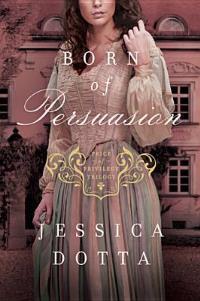 Julia Elliston is a distinctive character. She isn't the same feisty, independent heroine you often see in Victorian historical fiction; she's spirited but powerless in many ways, and she has difficulty seeing the true motives of the people around her. How did you develop her personality?
Julia Elliston is a distinctive character. She isn't the same feisty, independent heroine you often see in Victorian historical fiction; she's spirited but powerless in many ways, and she has difficulty seeing the true motives of the people around her. How did you develop her personality?
Julia's mindset is not only Victorian, but she begins the story broken and in need of healing. Though I did not realize it then, as I wrote Born of Persuasion, I was exploring areas of my past and personal life that needed addressed.
As much as it pains me to admit—especially since she's been called unlikeable many times—Julia's character came from the deepest recesses of my soul. She was a facet I needed to explore.
Recently, at a writer's conference I discussed The Glass Castle, a memoir by Jeannette Walls, with a small intimate group of writers. I was dumbfounded to learn that they could not commend the book because parts of it—particularly Jeannette's lack of reaction—were unbelievable and unrealistic to them. I was dumbfounded. The areas they most objected to as being unrealistic, I had found to be the most stark and honest.
While my own personal story doesn't contain the depth of hardships that Ms. Walls faced, through Julia I've been able to express what it feels like to be powerless and without voice. Thankfully, as the series progresses I am also able to portray another truth in my life—that no person, regardless of his or her past, his or her injury, or what people collectively think about them, is beyond the healing—and that in God's hands the least likely person has potential for greatness.
Born of Persuasion has many classic Gothic elements: a mysterious old mansion, creepy foreshadowing, a young woman in danger, a handsome suitor who may mean her good or ill as well as some original, unpredictable twists. Where did your interest in Gothic fiction come from?
My personal library shelves are filled with gothic authors and stories! Daphne du Maurier, Victoria Holt, Bram Stoker, the Bronte sisters, and even some of Lucy Maud Montgomery's writings take gothic twists.
As a child, I adored the crackle of leaves swirling in a crisp autumn wind and exploring gravesites. Walled gardens, locked doors and majestic, yet deteriorating, houses would unleash a torrent of creativity as I'd make up stories about them.
Julia has an antagonistic relationship with the church, thanks to how her parish vicar treated her and her family due to her father's atheist beliefs. How did you decide on this premise for your heroine? Was it part of the novel from the beginning?
There's a decade gap between the first random scenes of Born of Persuasion and me sitting down and fully drafting out the full manuscript. During that decade, intermittently I'd try opening this story in various places. Some of those scenes took place in Julia's childhood and gave me an understanding of her past.
After I'd written the full manuscript, I submitted it to critique groups while I developed my writing craft. I quickly realized that half the people understood Julia immediately, while she frustrated the other half. To make her actions—or sometimes lack of action—relatable when I rewrote it, I included more about her past.
The novel is full of descriptions of daily life in early Victorian England, from class distinctions and period clothing to mourning customs to the elaborate décor in the houses she visits. What were your favorite aspects of research into the era? Was there anything you would have liked to include but which you couldn't find room for?
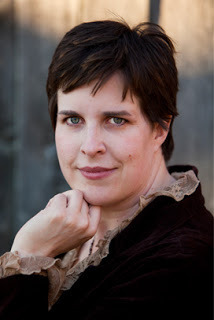 Author Jessica DottaThe Victorian mindset was of particular interest to me. I grew up in a house with strict views on what a woman's role was, so in one sense, I was prepared to understand it well. What I marveled at, as I researched, was the role expected of gentlemen.
Author Jessica DottaThe Victorian mindset was of particular interest to me. I grew up in a house with strict views on what a woman's role was, so in one sense, I was prepared to understand it well. What I marveled at, as I researched, was the role expected of gentlemen.
The deeper I researched, the more I realized how fragile a woman's position was. The era's remedy for that—as far as I can tell—was to entrench in a young man's mind with his duty and responsibility in life. It stands in stood in stark contrast of how our generation handles the representation of men. When I close my eyes and picture a "typical" male on television, I picture someone on the couch, with a bottle of beer, ignoring his wife who is in the background giving sage advice.
While I do not like how women were pigeonholed into during the Victorian era, I was utterly struck by the duty and chivalry they assign men during this period of time. I wish some of that mentality would carry over into our representation of men now.
As far as what didn't make the final cut, there are lots and lots of cut scenes and characters, but some of them might be make it in the final cut of the last book, Price of Privilege.
I'm a big fan of your Pinterest page. I loved all the images of 1830s day dresses, scenes from a country cottage like Am Meer in the novel, and other fun things like recipes. It seems like a great way to modernize a classic Victorian scrapbook. What inspired you to put it together? Are there any pictures in it that helped with your work in scene-setting or plotting?
I'm so happy you explored my Pinterest page! I discovered Pinterest when a group of women were talking about a nail-painting technique they'd learned on the site. I'd never heard of Pinterest, but quickly signed up after their enthusiastic explanation of what it was.
Pinterest presented a perfect solution for a way to organize all the photos I had taking up space on my computer for my books. Not only that, but sometimes on the web I'd encounter an article or pictures that I'd need later. I'd bookmark it, and then spend hours looking through my bookmarks to find it again. Pinterest has boards that I could pin organize by scenes, houses, dress and characters.
Right now, I have scenes for Book Three on hidden boards—but after the book releases, I'll make them public, too.
You've worked for many years as a publicist, creating buzz about other authors' books. What kind of insight has this given you into how to sell and market your book, either to publishers or readers?
When I first became a book publicist and realized how difficult it is to get your book noticed on an already saturated market place, I was overwhelmed. But I was also thankful that I was seeing what I would one day encounter.
I learned the majority of work falls upon the author—even with a fantastic publicist. It takes a team effort to launch a book—and that includes your tribe, your writing tribe, your publisher and agent.
It taught me how important the wait to become published is. You grow your tribe as you have grown your skills—over time. I also learned a fiction launch needs to be fun—even silly. After all, a novel is primarily entertainment.
For my own launch, I've kept with a theme that is consistent with my book. What is more British and Victorian than tea? I'm hosting a large virtual tea party on my Facebook Page. Participants are helping me spread the word by posting pictures on Facebook, with them wearing a hat and holding a teacup, and telling everyone they are celebrating the launch of Born of Persuasion.
I plan to continue this theme with bookstore signings and library gatherings.
Sarah, you and your readers are welcome to join the tea!
Thanks for the invitation, Jessica! I'm happy to attend.
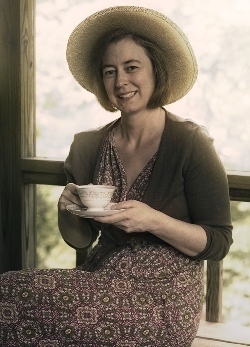
~
Jessica Dotta's Born of Persuasion was published by Tyndale House in August ($13.99/pb or $7.97/ebook, 448pp). Visit the author's website at http://www.jessicadotta.com.
Born of Persuasion, first in the Price of Privilege trilogy, follows Julia as she gradually becomes aware of the circumstances shadowing her life. As she searches for someone to trust, she must choose between two very different men: her childhood sweetheart, Edward, and the handsome, much older, and reclusive Mr. Macy. This isn't your run-of-the-mill Gothic fare, although it does have many key elements of the genre. The author has added many distinctive touches to her twisting story, such as insight into the language of flowers and the role of the church in Victorian times.
At the time of her novel's launch, I took the time to speak with Jessica about her characters and what appealed to her about her chosen genre and setting.
 Julia Elliston is a distinctive character. She isn't the same feisty, independent heroine you often see in Victorian historical fiction; she's spirited but powerless in many ways, and she has difficulty seeing the true motives of the people around her. How did you develop her personality?
Julia Elliston is a distinctive character. She isn't the same feisty, independent heroine you often see in Victorian historical fiction; she's spirited but powerless in many ways, and she has difficulty seeing the true motives of the people around her. How did you develop her personality? Julia's mindset is not only Victorian, but she begins the story broken and in need of healing. Though I did not realize it then, as I wrote Born of Persuasion, I was exploring areas of my past and personal life that needed addressed.
As much as it pains me to admit—especially since she's been called unlikeable many times—Julia's character came from the deepest recesses of my soul. She was a facet I needed to explore.
Recently, at a writer's conference I discussed The Glass Castle, a memoir by Jeannette Walls, with a small intimate group of writers. I was dumbfounded to learn that they could not commend the book because parts of it—particularly Jeannette's lack of reaction—were unbelievable and unrealistic to them. I was dumbfounded. The areas they most objected to as being unrealistic, I had found to be the most stark and honest.
While my own personal story doesn't contain the depth of hardships that Ms. Walls faced, through Julia I've been able to express what it feels like to be powerless and without voice. Thankfully, as the series progresses I am also able to portray another truth in my life—that no person, regardless of his or her past, his or her injury, or what people collectively think about them, is beyond the healing—and that in God's hands the least likely person has potential for greatness.
Born of Persuasion has many classic Gothic elements: a mysterious old mansion, creepy foreshadowing, a young woman in danger, a handsome suitor who may mean her good or ill as well as some original, unpredictable twists. Where did your interest in Gothic fiction come from?
My personal library shelves are filled with gothic authors and stories! Daphne du Maurier, Victoria Holt, Bram Stoker, the Bronte sisters, and even some of Lucy Maud Montgomery's writings take gothic twists.
As a child, I adored the crackle of leaves swirling in a crisp autumn wind and exploring gravesites. Walled gardens, locked doors and majestic, yet deteriorating, houses would unleash a torrent of creativity as I'd make up stories about them.
Julia has an antagonistic relationship with the church, thanks to how her parish vicar treated her and her family due to her father's atheist beliefs. How did you decide on this premise for your heroine? Was it part of the novel from the beginning?
There's a decade gap between the first random scenes of Born of Persuasion and me sitting down and fully drafting out the full manuscript. During that decade, intermittently I'd try opening this story in various places. Some of those scenes took place in Julia's childhood and gave me an understanding of her past.
After I'd written the full manuscript, I submitted it to critique groups while I developed my writing craft. I quickly realized that half the people understood Julia immediately, while she frustrated the other half. To make her actions—or sometimes lack of action—relatable when I rewrote it, I included more about her past.
The novel is full of descriptions of daily life in early Victorian England, from class distinctions and period clothing to mourning customs to the elaborate décor in the houses she visits. What were your favorite aspects of research into the era? Was there anything you would have liked to include but which you couldn't find room for?
 Author Jessica DottaThe Victorian mindset was of particular interest to me. I grew up in a house with strict views on what a woman's role was, so in one sense, I was prepared to understand it well. What I marveled at, as I researched, was the role expected of gentlemen.
Author Jessica DottaThe Victorian mindset was of particular interest to me. I grew up in a house with strict views on what a woman's role was, so in one sense, I was prepared to understand it well. What I marveled at, as I researched, was the role expected of gentlemen. The deeper I researched, the more I realized how fragile a woman's position was. The era's remedy for that—as far as I can tell—was to entrench in a young man's mind with his duty and responsibility in life. It stands in stood in stark contrast of how our generation handles the representation of men. When I close my eyes and picture a "typical" male on television, I picture someone on the couch, with a bottle of beer, ignoring his wife who is in the background giving sage advice.
While I do not like how women were pigeonholed into during the Victorian era, I was utterly struck by the duty and chivalry they assign men during this period of time. I wish some of that mentality would carry over into our representation of men now.
As far as what didn't make the final cut, there are lots and lots of cut scenes and characters, but some of them might be make it in the final cut of the last book, Price of Privilege.
I'm a big fan of your Pinterest page. I loved all the images of 1830s day dresses, scenes from a country cottage like Am Meer in the novel, and other fun things like recipes. It seems like a great way to modernize a classic Victorian scrapbook. What inspired you to put it together? Are there any pictures in it that helped with your work in scene-setting or plotting?
I'm so happy you explored my Pinterest page! I discovered Pinterest when a group of women were talking about a nail-painting technique they'd learned on the site. I'd never heard of Pinterest, but quickly signed up after their enthusiastic explanation of what it was.
Pinterest presented a perfect solution for a way to organize all the photos I had taking up space on my computer for my books. Not only that, but sometimes on the web I'd encounter an article or pictures that I'd need later. I'd bookmark it, and then spend hours looking through my bookmarks to find it again. Pinterest has boards that I could pin organize by scenes, houses, dress and characters.
Right now, I have scenes for Book Three on hidden boards—but after the book releases, I'll make them public, too.
You've worked for many years as a publicist, creating buzz about other authors' books. What kind of insight has this given you into how to sell and market your book, either to publishers or readers?
When I first became a book publicist and realized how difficult it is to get your book noticed on an already saturated market place, I was overwhelmed. But I was also thankful that I was seeing what I would one day encounter.
I learned the majority of work falls upon the author—even with a fantastic publicist. It takes a team effort to launch a book—and that includes your tribe, your writing tribe, your publisher and agent.
It taught me how important the wait to become published is. You grow your tribe as you have grown your skills—over time. I also learned a fiction launch needs to be fun—even silly. After all, a novel is primarily entertainment.
For my own launch, I've kept with a theme that is consistent with my book. What is more British and Victorian than tea? I'm hosting a large virtual tea party on my Facebook Page. Participants are helping me spread the word by posting pictures on Facebook, with them wearing a hat and holding a teacup, and telling everyone they are celebrating the launch of Born of Persuasion.
I plan to continue this theme with bookstore signings and library gatherings.
Sarah, you and your readers are welcome to join the tea!
Thanks for the invitation, Jessica! I'm happy to attend.

~
Jessica Dotta's Born of Persuasion was published by Tyndale House in August ($13.99/pb or $7.97/ebook, 448pp). Visit the author's website at http://www.jessicadotta.com.
Published on August 21, 2013 05:00
August 20, 2013
Bits and pieces: contest winners, and new historical fiction course
University of Virginia English professor Bruce Holsinger, author of the excellent Burnable Books blog and author of the forthcoming A Burnable Book, a literary thriller set in 14th-century London (William Morrow, Feb '14), will be teaching a free 8-week online course entitled "Plagues, Witches, and War: The Worlds of Historical Fiction" starting this October. The MOOC (Massive Online Open Course) will be taught through the Coursera online platform. Participants will get to explore the foundations of the historical fiction genre through readings and the viewing of related lectures, and seminars and interviews with many popular historical fiction writers – including Geraldine Brooks, Katherine Howe, Matthew Pearl, Yangsze Choo, Mary Beth Keane, and Jane Alison – will be provided.
It looks like a great opportunity to learn more about the genre and its practitioners, past and present. I plan to sign myself up. Here's a longer description at the Burnable Books site, with links on how to enroll.
~
The winners of four recent contests on this blog have been chosen, although I've been neglectful (swamped, more like!) and haven't yet announced them here. Congratulations to:
Sonia D, the winner of Elisabeth Storrs' The Golden DiceBrett C, the winner of Janice Weizman's The Wayward MoonColleen T, the winner of Stephanie Carroll's A White RoomDenise D, the winner of Victoria Wilcox's Inheritance All winners and the prize sponsors have been notified. Thanks to everyone who entered, and to the authors and publishers who provided the giveaway copies.
It looks like a great opportunity to learn more about the genre and its practitioners, past and present. I plan to sign myself up. Here's a longer description at the Burnable Books site, with links on how to enroll.
~
The winners of four recent contests on this blog have been chosen, although I've been neglectful (swamped, more like!) and haven't yet announced them here. Congratulations to:
Sonia D, the winner of Elisabeth Storrs' The Golden DiceBrett C, the winner of Janice Weizman's The Wayward MoonColleen T, the winner of Stephanie Carroll's A White RoomDenise D, the winner of Victoria Wilcox's Inheritance All winners and the prize sponsors have been notified. Thanks to everyone who entered, and to the authors and publishers who provided the giveaway copies.
Published on August 20, 2013 06:30
August 19, 2013
Spy Island: The Story Behind the Story, a guest post by Sophie Schiller (plus giveaway)
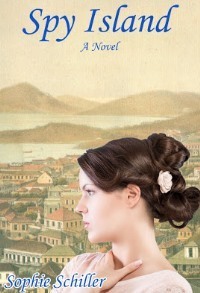 Today Sophie Schiller is stopping by the blog with an essay that combines a personal story with details on the multicultural background of the Danish West Indies, the setting for her new historical novel Spy Island. Knowing little about the colorful history of this part of the world, and gravitating as I do toward unusual settings, I was fascinated to read more about West Indies culture and how Sophie came up with her heroine and storyline.
Today Sophie Schiller is stopping by the blog with an essay that combines a personal story with details on the multicultural background of the Danish West Indies, the setting for her new historical novel Spy Island. Knowing little about the colorful history of this part of the world, and gravitating as I do toward unusual settings, I was fascinated to read more about West Indies culture and how Sophie came up with her heroine and storyline.Thanks to the generosity of the author, we have a giveaway opportunity at the end (the winner's choice of print or e-book), open internationally.
~
Spy Island: The Story Behind the Story
Sophie Schiller
First off, a big thank you to Sarah for inviting me guest blog on Reading the Past.
My father was something of a nonconformist, and when I turned eight at the height of the oil crisis in 1973, he picked my family up and moved us to the West Indies. At the time, I had no way of knowing how that move would affect me, but it ended up changing my life forever. The experience of growing up in St. Thomas (an island in the former Danish West Indies) became embedded in my soul. As I grew older and ventured out to explore the beautiful city of Charlotte Amalie—her palm-shaded alleyways, her curious Danish street names and architecture, her red-roofed houses—I became obsessed with a single, nagging question: Why aren't there more books that illustrate the rich, vibrant history of the Danish West Indies?
 Looking like a bit of Denmark in the Caribbean: Charlotte Amalie, St. Thomas.
Looking like a bit of Denmark in the Caribbean: Charlotte Amalie, St. Thomas. (Wikimedia Commons)
Sometimes in the late afternoon I would wander down to the waterfront to watch the ships bobbing in the harbor and the Dannebrog fluttering up on Denmark Hill. Invariably, my mind would start to wander. I would picture swashbuckling pirates staggering out of saloons, top-hatted Danish officials strolling into Fort Christian, and turbaned native women dancing the bamboula down by Market Square. But as the sun inched closer to the horizon, invariably I would trudge home, despondent that these colorful characters were long gone or long dead. Somewhere along the way, I decided to write my own novel to bring the past to life again. Since no one else had done it, then I would do it.
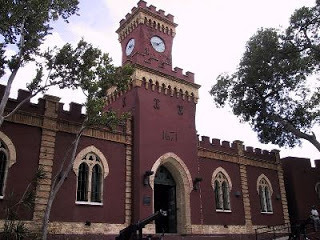 Fort Christian, the site of a suspenseful prison breakout scene in the novel.
Fort Christian, the site of a suspenseful prison breakout scene in the novel. (Wikimedia Commons)
One of the questions that often swirled in my head concerned the island name Maduro. Lots of Virgin Islanders are named Maduro; it's almost as common as Smith or Jones is in the States. But the name always struck me as odd. Certain island names such as Maduro, Robles, Hoheb, Fidanque, De Castro, Sasso, and Henriquez had an unmistakable Spanish-sounding ring to them. Where did these names come from? How did these inhabitants of a former Danish colony wind up with Spanish-sounding names? To my surprise, I learned that the name Maduro was actually a Sephardic Jewish name, brought to the island by 18th- and 19th-century immigrants whose roots spread all the way back to Holland, Portugal, and Spain. This surprising discovery made my curiosity grow by leaps and bounds.
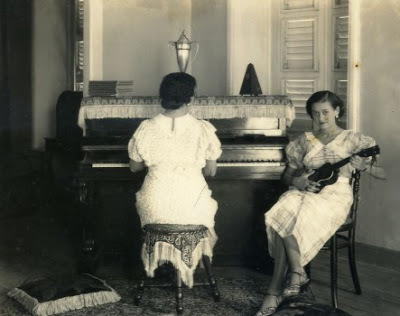 Creole Sephardic women in the West Indies.
Creole Sephardic women in the West Indies.History relates that the name Maduro was adopted by 16th-century Conversos from the Hebrew tribe of Levi, who fled the Iberian peninsula for Holland in order keep their Jewish identity intact. These Spanish-Portuguese Jews later crossed the Atlantic and settled in tolerant Dutch colonies such as Recife (Dutch Brazil), Suriname, Curaçao, and St. Eustacius, and later on in the Danish West Indies. As more Sephardic Jews colonized St. Thomas, they developed the island as an important commercial center, yet by the late 20th century, they were all but gone. All that was left was their Sephardic synagogue with its curious sandy floor, and the cemetery headstones with their curious Spanish-sounding names. But the people had disappeared. What happened to them? Where did they go?
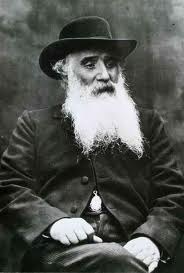 St. Thomas' most famous Sephardic Jew,
St. Thomas' most famous Sephardic Jew, Camille Pissarro.Research pointed to Panama. In 1867, a devastating hurricane struck the island and wrecked the economy. When the situation failed to improve by the 1880s, many of the island's Sephardic Jews emigrated to Panama, then seen as the land of opportunity with the building of the Panama Canal. But not all of them left. It was easy for a bachelor to pick up and leave his home in search of fame and fortune, but by doing so they left behind scores of single women to languish in eternal spinsterhood. This interesting twist of history became the germ of my story.
I decided to focus on a Sephardic girl, Abigail Maduro, who is orphaned when her parents are killed in a railway accident along the Panama Canal, and she is then forced to live with her Aunt Esther, a bitter spinster, on the island of St. Thomas. With her facing a lifetime of poverty and despair, I wanted to see what would happen if a man were to suddenly appear who could change Abigail's fate for the better, a man who was running away from his own past. Furthermore, I wanted to see what would happen if this young man happened to be a German war deserter just as America was about to take over the islands and declare war on Germany.
I developed a plot in which an officer from a German U-boat (Erich Seibold) deserts his ship in the middle of the war and talks his way aboard a tramp steamer bound for the West Indies. When they reach the Danish West Indies, he jumps off to wait out the end of the war. On the island, Erich stumbles into Abigail, a sheltered, yet adventurous girl who sees in Erich a chance for friendship and greater purpose. But unbeknownst to them, Erich is being watched. The island has an embedded spy ring operating out of the Hamburg-America Line under the leadership of Lothar Langsdorff, who is also the German consul. When Langsdorff discovers a German deserter in his midst, he decides to exploit him to serve the Fatherland. Langsdorff blackmails Erich into committing sabotage. After a melee involving the Danish governor, Erich becomes a wanted German spy.
 Danish Gendarme, Christian Livbjerg, circa 1916, with trusty revolver and sword.
Danish Gendarme, Christian Livbjerg, circa 1916, with trusty revolver and sword.The result is an action-packed adventure filled with Caribbean island lore, Old World Danish charm, blazing luger pistols, a mad Voodoo Queen, and a courageous, warm-hearted heroine who discovers the meaning of courage and love, and goes to great lengths to save the man she loves and her beloved island from a dangerous German spy. Above all, Spy Island brings to life all the beauty and color of a fading West Indian sugar colony in the last days of Danish rule.
Sophie Schiller was born in Paterson, NJ and grew up in the West Indies amid aging pirates and retired German spies. She was educated at American University, Washington, D.C. and lives in Brooklyn, NY, where she is currently working on a historical novel set during the Great Game in Tibet.
~
Spy Island by Sophie Schiller was published in 2013 by CreateSpace in paperback ($12.50) and as an ebook ($2.99). For a chance to win a copy (print or ebook, your choice), please fill out the form below. This giveaway is open internationally and will run through Monday, August 26th. Good luck!
Loading...
Published on August 19, 2013 05:30
August 16, 2013
Robert J. Begiebing's The Turner Erotica, a thought-provoking exploration of Victorian art and morality
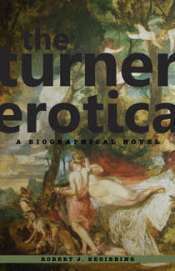 As the contemporary art world reacts to accounts that stolen masterworks may have been burned in distant Romania, a new novel, based upon claims of a similarly destructive episode from 150 years ago, examines 19th-century British society's polarized reactions to an event which has passed into legend as a classic story of Victorian censorship.
As the contemporary art world reacts to accounts that stolen masterworks may have been burned in distant Romania, a new novel, based upon claims of a similarly destructive episode from 150 years ago, examines 19th-century British society's polarized reactions to an event which has passed into legend as a classic story of Victorian censorship.Robert J. Begiebing's thought-provoking and character-driven book opens with a scene in which his protagonist imagines an "unholy conflagration" which took place in secret. Victorian art critic John Ruskin, having discovered erotic sketches among the works of his late hero, J.M.W. Turner, elicits the help of National Gallery Keeper Ralph Wornum in consigning them to the flames.
Ruskin has difficulty processing that the revered master, known even then as Britain's greatest landscape artist, also created what he deems pornography. "They were... the products of a certain disease of mind that afflicted him at times," Ruskin tells his friend, American artist William James Stillman. To Ruskin, the crime wasn't in his burning of Turner's drawings but the offense of their existence.
Stillman, an admirer of Turner, is horrified by the thought that a collection so important to the legacy of British art history was destroyed, and this severs his close relationship with Ruskin. The Turner Erotica follows Stillman's decades-long pursuit of sketches that, rumor has it, escaped the fire. This draws him into the company of pre-Raphaelite notables William and Gabriel Rossetti, explorer Richard Burton, and a worldly American painter, Allegra Fullerton, a fictional character whose life and travels were the focus of Begiebing's second novel.
The Turner Erotica is a work of fiction that reads like the journal of a man living through the mid-19th century. Like the subtitle ("a biographical novel") implies, Stillman was a real person, and his life was dramatic in its own right; his and others' authentic words have been interwoven into the story. Named U.S. ambassador in Rome in his early thirties, his later diplomatic post saw him caught up in the Christian Cretans' insurrection against Ottoman rule in the late 1860s.
As he continually fights to reclaim the sketches, which he discovers had indeed been saved, Stillman struggles to raise his growing family and make his romantic relationships work. But the more elusive his quest for the Turners becomes, the more his obsession threatens to overtake what matters most to him personally.
Ruskin's burning of Turner's racy drawings may or may not have happened in real life (although Ruskin bragged about doing so, he may have made the story up to protect himself from prosecution under the Obscene Publications Act of 1857). What matters for this particular novel is that Stillman and his contemporaries would have believed it.
The Turner Erotica succeeds in expressing the unrestrained joys and the restlessness of the artistic life and provides an authentic sense of the era, both its legislated moral codes and the sensuality of those who dared pursue their passions. A page-turner when describing human interactions, it turns deeply philosophical when re-creating its characters' conversations about the meaning of art. Were Turner's erotic works part of his attempt to depict all means of human expression, or was his intent titillation? Should it matter, or should one judge on the quality of the art alone?
As the novel skillfully explores these issues and others, it compels readers to think about them as well.
The Turner Erotica was published by Ilium Press in April (trade pb, $14.95, 282pp).
Published on August 16, 2013 07:00
August 13, 2013
A treacherous review? A discussion about spoilers
One of the items that popped up on my Bloglovin feed yesterday was a piece from the Guardian entitled "Has William Boyd spoiled Henning Mankell?" It noted the grumpy letters to the editor written to the New York Times following the appearance of Boyd's spoilerific review of Mankell's A Treacherous Paradise.
"William Boyd’s review of Henning Mankell’s new novel, 'A Treacherous Paradise' (July 21), ruined my reading of the book," wrote one angry reader.
"I have not read Henning Mankell’s book, but I certainly feel little need to now that Boyd has revealed the entire plot," declared another.
I'm always curious to know what other reviewers think about books I've read, since no two people experience the same book in exactly the same way. Boyd's review was highly positive, and I thought it was great to see a deserving book get good press... but, as I wrote in a comment to my own writeup, the NYT review gave away "most of the plot, including the ending, so those who want to appreciate the suspense should steer clear."
In reading the letters to the editor, I was glad to see I wasn't alone! I also found it ridiculous to criticize (as some Guardian commenters did) those who "read for plot" and don't want the twists and turns in a suspense novel told to them in advance.
I've written for several review publications that had "no spoiler" policies, and when I edit reviews for the Historical Novels Review, I check with the reviewer if some aspect of their writeup looks potentially spoilery. If I haven't read a book myself, it isn't always easy to tell for sure. On the other hand, if I have read the book in question, and I know a key plot point is being disclosed, I carefully edit the review to blur the details and leave the big reveal for the reader to discover on her own.
This is one of the responsibilities and hazards of editing reviews; sometimes I learn a little too much about books I'd planned on getting to. Fortunately this happens rarely, and this is an extreme example... but I still remember one time when a brand new reviewer, not being used to the job yet, turned in a review of a WWII thriller that told me the protagonist would be killed at the very end, his airplane crashing to the ground in a huge ball of flame. I still haven't read the book (and no, I'm not going to say which one it is).
What are your thoughts on spoilers? How much do you want to know about a book, plot-wise, when you read a review?
"William Boyd’s review of Henning Mankell’s new novel, 'A Treacherous Paradise' (July 21), ruined my reading of the book," wrote one angry reader.
"I have not read Henning Mankell’s book, but I certainly feel little need to now that Boyd has revealed the entire plot," declared another.
I'm always curious to know what other reviewers think about books I've read, since no two people experience the same book in exactly the same way. Boyd's review was highly positive, and I thought it was great to see a deserving book get good press... but, as I wrote in a comment to my own writeup, the NYT review gave away "most of the plot, including the ending, so those who want to appreciate the suspense should steer clear."
In reading the letters to the editor, I was glad to see I wasn't alone! I also found it ridiculous to criticize (as some Guardian commenters did) those who "read for plot" and don't want the twists and turns in a suspense novel told to them in advance.
I've written for several review publications that had "no spoiler" policies, and when I edit reviews for the Historical Novels Review, I check with the reviewer if some aspect of their writeup looks potentially spoilery. If I haven't read a book myself, it isn't always easy to tell for sure. On the other hand, if I have read the book in question, and I know a key plot point is being disclosed, I carefully edit the review to blur the details and leave the big reveal for the reader to discover on her own.
This is one of the responsibilities and hazards of editing reviews; sometimes I learn a little too much about books I'd planned on getting to. Fortunately this happens rarely, and this is an extreme example... but I still remember one time when a brand new reviewer, not being used to the job yet, turned in a review of a WWII thriller that told me the protagonist would be killed at the very end, his airplane crashing to the ground in a huge ball of flame. I still haven't read the book (and no, I'm not going to say which one it is).
What are your thoughts on spoilers? How much do you want to know about a book, plot-wise, when you read a review?
Published on August 13, 2013 16:00
August 7, 2013
Elsie Augustave's The Roving Tree, a historical novel of cultural exploration and rediscovery
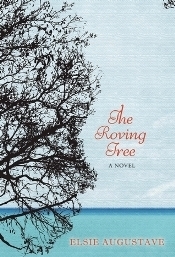 Augustave’s expressive debut traces a young woman’s search for her cultural and emotional identity. Born in rural Haiti in the late 1950s and adopted by white American parents, Iris Odys is continually drawn back to her natal culture but can only experience it as an outsider working her way back in.
Augustave’s expressive debut traces a young woman’s search for her cultural and emotional identity. Born in rural Haiti in the late 1950s and adopted by white American parents, Iris Odys is continually drawn back to her natal culture but can only experience it as an outsider working her way back in. The Roving Tree opens with a mystical sequence reflecting the vaudou religion of the Haitian people. Moments after Iris’s death in childbirth, the loa of fertility grants her a final wish. Iris asks the spirit to record her life story so her daughter will know where she came from.
It begins in the village of Monn Nèg in 1961, when a visiting anthropologist and her husband agree to give five-year-old Iris a better life by raising her as their own in suburban Westchester, New York. Her loving adoptive parents accept her for who she is, but her white schoolmates aren’t always so kind. As a young woman, Iris reconnects with Haitian traditions through her love of dance. When tragedy calls her back to Haiti, she begins piecing her family history together.
Augustave does an exemplary job guiding readers through what may be unfamiliar territory. In ‘70s New York City, in Haiti under the brutal Duvalier regime, and later in Zaire, Iris must adjust to new customs and decide which ones to assimilate and which to discard. Her relatives’ stories, seen in flashback, reveal the class prejudice so prevalent at the time, the long-term effects of slavery, and the African traditions passed down over generations.
Richly evocative of each successive time and place, from colorful scenes of vaudou rituals to political corruption in ‘80s Africa, the novel also tells a universal story of heritage and rediscovery in its depiction of a soul full of passionate yearning. A worthy contribution to modern literature of the African diaspora.
The Roving Tree was published by Akashic Books' Open Lens imprint in May at $15.95 (trade pb, 308pp). This review also appears in August's Historical Novels Review.
Published on August 07, 2013 11:06



